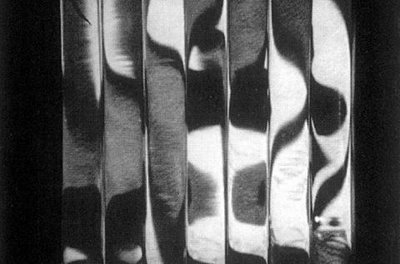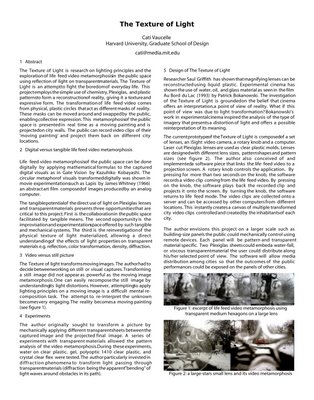I mentioned the work of Kelly Dobson about a year ago. Today, I attended her VERY inspiring thesis defense at the Media Lab, researching on Machine Therapy. I love her personal relationship to machines. I cannot wait to read her thesis!
Abstract
In this thesis I describe a new body of work called Machine Therapy, a methodology for revealing the vital relevance of subconscious elements of human-machine interactions that works within art, design, psychodynamics, and engineering. This practice highlights what machines actually do and mean, in contrast to what their designers consciously intended. Machine Therapy is a cyclical process that alternates between discussion of and sessions for empathic relationships with domestic appliances, personal extension and connection via wearable and prosthetic apparatuses, and the design of evocative visceral robots that interact with people’s understandings of themselves and each other. Combining research and practice in digital signal processing and machine learning, mechanical engineering, and textile sensor design, I have been able to create new objects and relationships that are unique in some aspects while maintaining quotidian familiarity in other aspects. This is illustrated through the documented construction of several projects including re-appropriated domestic devices, wearable apparatuses, and machines that act in relation with users’ autonomic signals. These Machine Therapy devices are evaluated in studies of participants’ interactive engagements with the machines as well as participants’ affective responses to the machines. The Machine Therapy projects facilitate unusual explorations of the parapraxis of machine design and use: these usually unconscious elements of our interactions with machines critically affect our sense of self, agency in the social and political world, and shared emotional, cultural, and perceptual development.
Dissertation Committee
Christopher Csikszentmihályi
Associate Professor of Media Arts and Sciences
Muriel Cooper Professor of Media Arts and Sciences
Program in Media Arts and Sciences
MIT Media Laboratory
Rosalind W. Picard
Professor of Media Arts and Sciences
Program in Media Arts and Sciences
MIT Media Laboratory
Edith Ackermann, PhD
Honorary Professor of Developmental Psychology
University of Aix-Marseille I, France
Visiting Scientist, MIT School of Architecture
Kelly’s Web site
Computing Culture research group


















